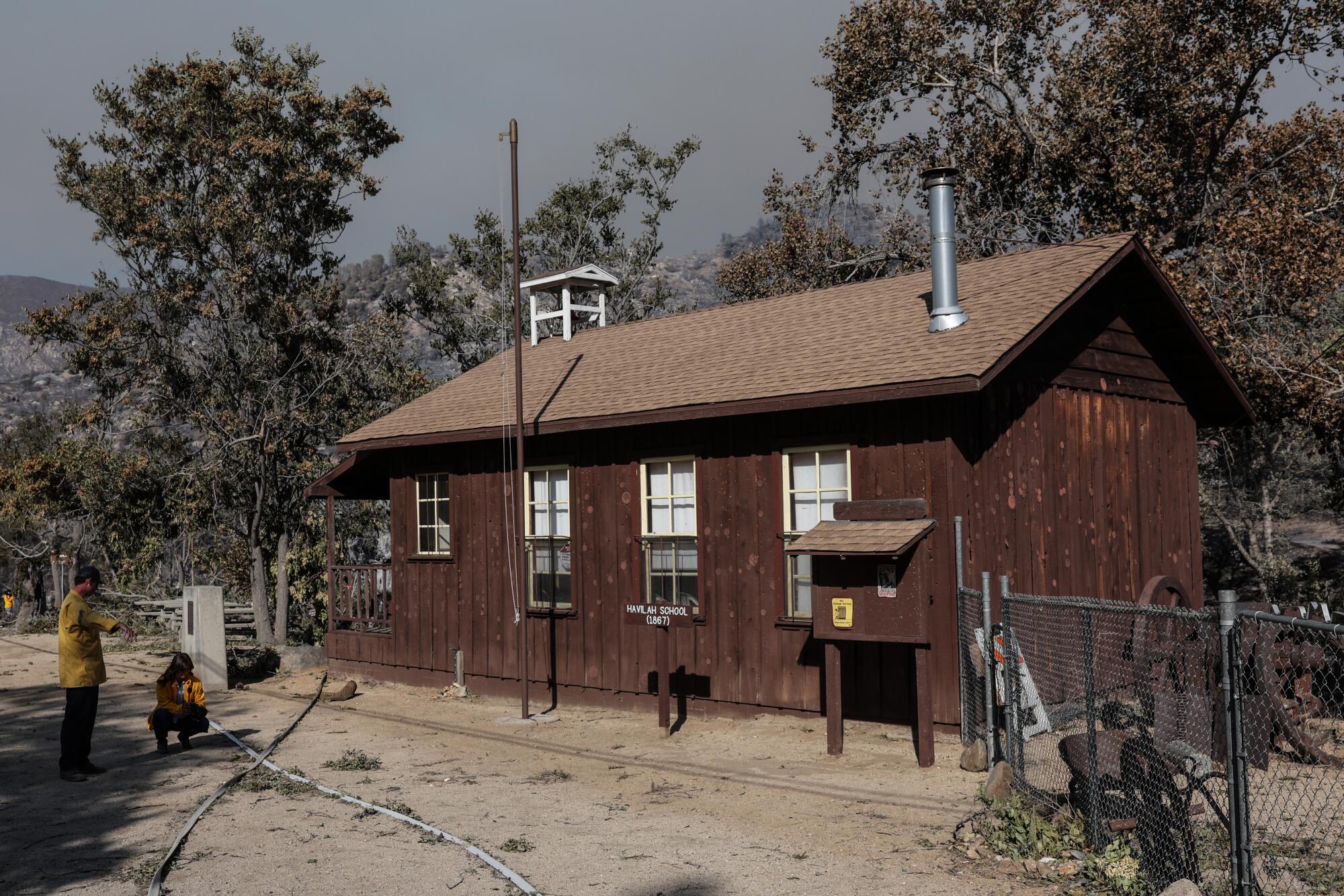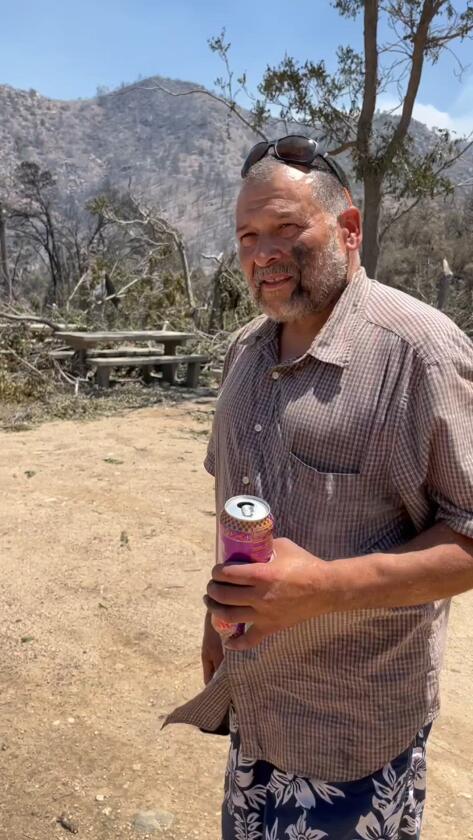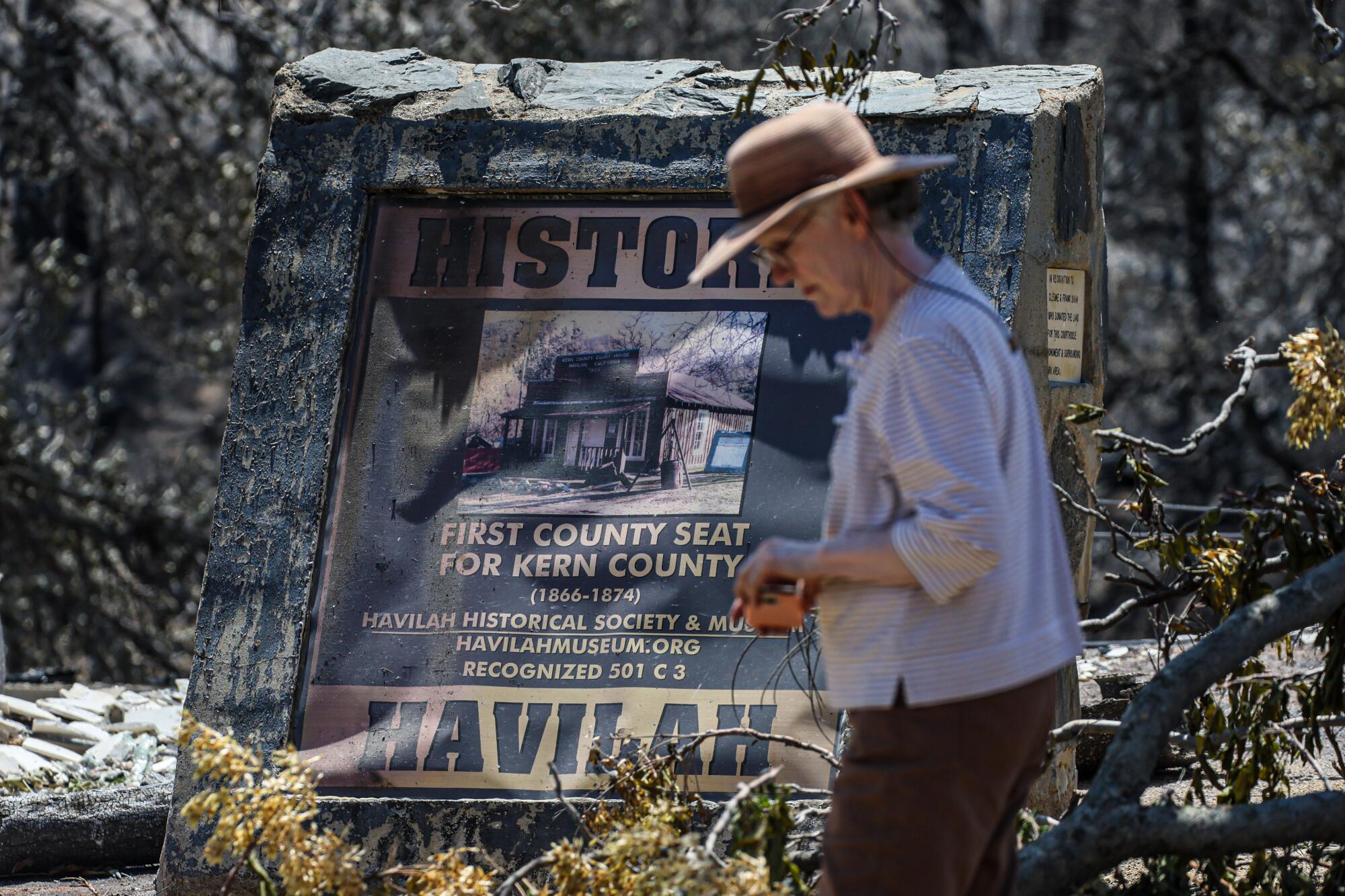
- Share via
HAVILAH, Calif. — There was gold in these hills.
Hidden in the rugged Sierra Nevada amid sprawling pine forests, Havilah was once a bustling mining town where stamp mills pulverized rock from the region’s mines and prospectors panned for precious metals in the late 19th century.
In its heyday, the town’s main drag featured saloons, dance halls, inns and gambling houses. Townsfolk witnessed midday gunfights, manhunts for wanted murders and stagecoach robberies, and they wagered gold dust on horse races, according to Los Angeles Times archives.
But for nearly a century, long after the feverish search for gold subsided, Havilah had been considered something of a ghost town, with only about 150 residents. Foundations were all that remained of most of its historic buildings when fire swept through the town July 26.
The fast-moving Borel fire, which has scorched more than 59,000 acres, destroyed some of the last vestiges of Havilah in just 24 hours, including a replica courthouse, which served as a small roadside museum for decades.
Aggressive and impactful reporting on climate change, the environment, health and science.
Roy Fluhart, whose ancestors had homesteaded in the area around the Great Depression, had tried to preserve the town’s rich history. As president of Havilah’s historical society, he and his relatives helped curate the courthouse with historic documents and photographs, antique mining tools and other artifacts from the region’s past.
“We lost everything,” Fluhart said. “The sad part is, the museum was an archive, and it’s lost now. Son of a gun. ... We didn’t really have time to get anything out.”
It wasn’t just the town’s history that was lost.
Havilah resident Bo Barnett, wearing the same clothes he had on when fleeing, recounts escaping the Borel fire. (Robert Gauthier / Los Angeles Times)
Bo Barnett, whose house was destroyed, managed to escape with his dogs and the clothes on his back. Barnett, whose wife died a month ago, expressed remorse that he didn’t have time to collect her ashes.
“Fire was raining down upon us,” Barnett said, as his eyes welled with tears. “I wasn’t sure what I was driving into. My tires were melting on the road. It was horrible.”
Gov. Gavin Newsom, who spent much of his childhood in the sparsely populated mining community of Dutch Flat in Placer County, lamented the loss of a fellow gold rush community . Wearing aviator sunglasses and a ball cap, he toured the wreckage in Havilah last week, walking up to the remnants of the town museum and pulling a novelty Uncle Sam coin bank from the blackened rubble.
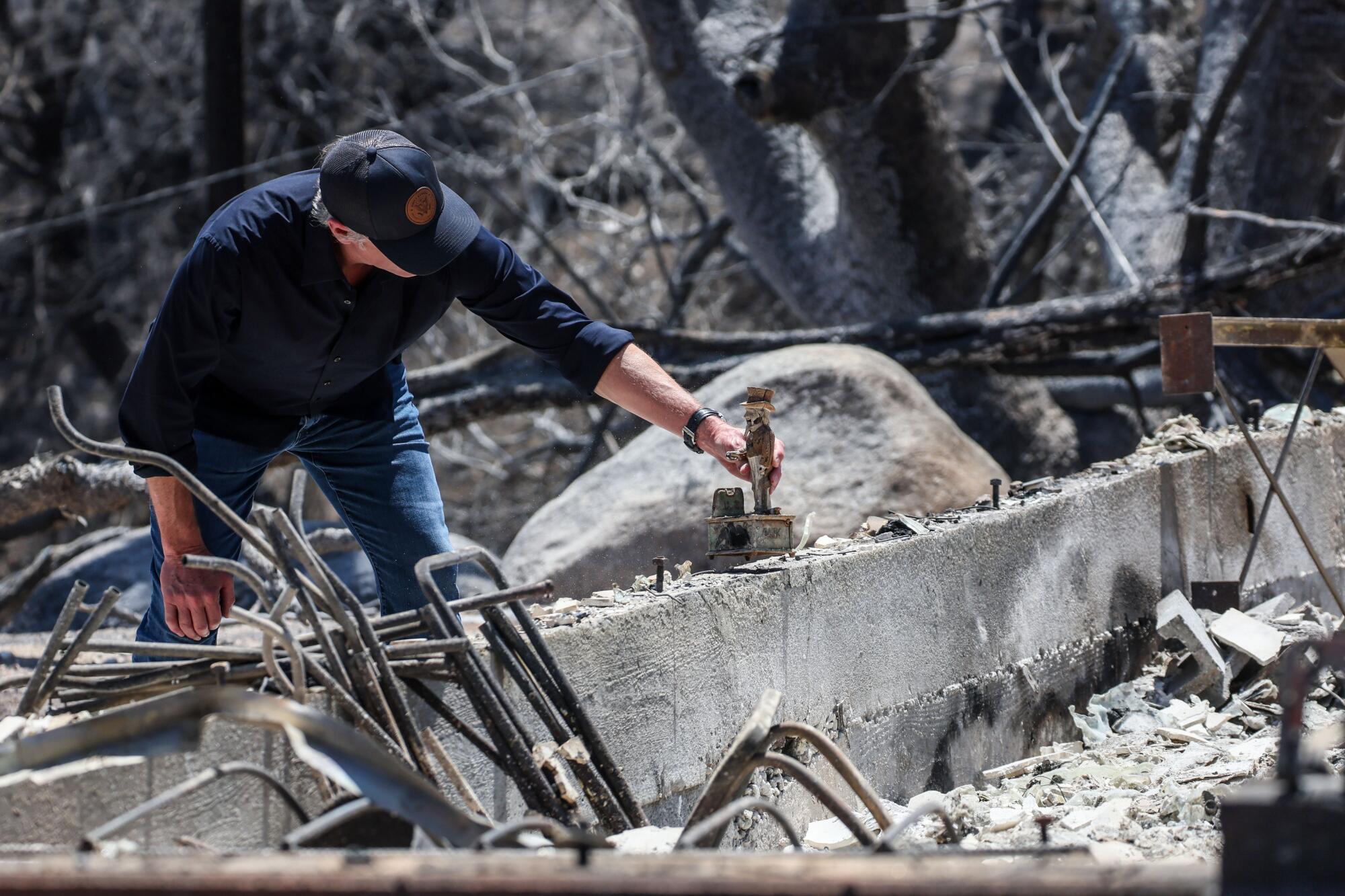
“Towns wiped off the map — places, lifestyles, traditions,” Newsom said at a news conference. “That’s what this is really all about. At the end of the day, it’s about people, it’s about history, it’s about memories.”
In recent years, devastating wildfires have obliterated some of California’s gold rush towns, erasing the history of one of the most significant eras in 19th century America. Havilah joins the likes of Paradise and Greenville, small communities that saw influxes of prospectors, followed by population exodus and, more recently, devastation.
Havilah credits its origin to Asbury Harpending — a Kentuckian who plotted to seize California and its gold to support the Confederacy during the Civil War. In 1864, Harpending, indignant after his conviction for high treason, ventured to present-day Kern County’s Clear Creek region. He found deposits of gold and christened the area Havilah, after a gold-rich land in the book of Genesis.
Although Harpending had no land rights, he established a sprawling mining camp and sold parcels to incoming miners in what many believed could be a second gold rush. In 1866, Havilah became the seat of the newly established Kern County, a title it held for eight years until Bakersfield became the principal city. He stayed only two years but made a fortune: $800,000.
“I was literally chased from absolute poverty into the possession of nearly a million dollars,” Harpending wrote in his autobiography. “I discovered a great mining district and founded a thriving town. And if the matter of paternity is ever brought up in court, it will probably be proved to the satisfaction of a jury that I am the father of Kern County.”
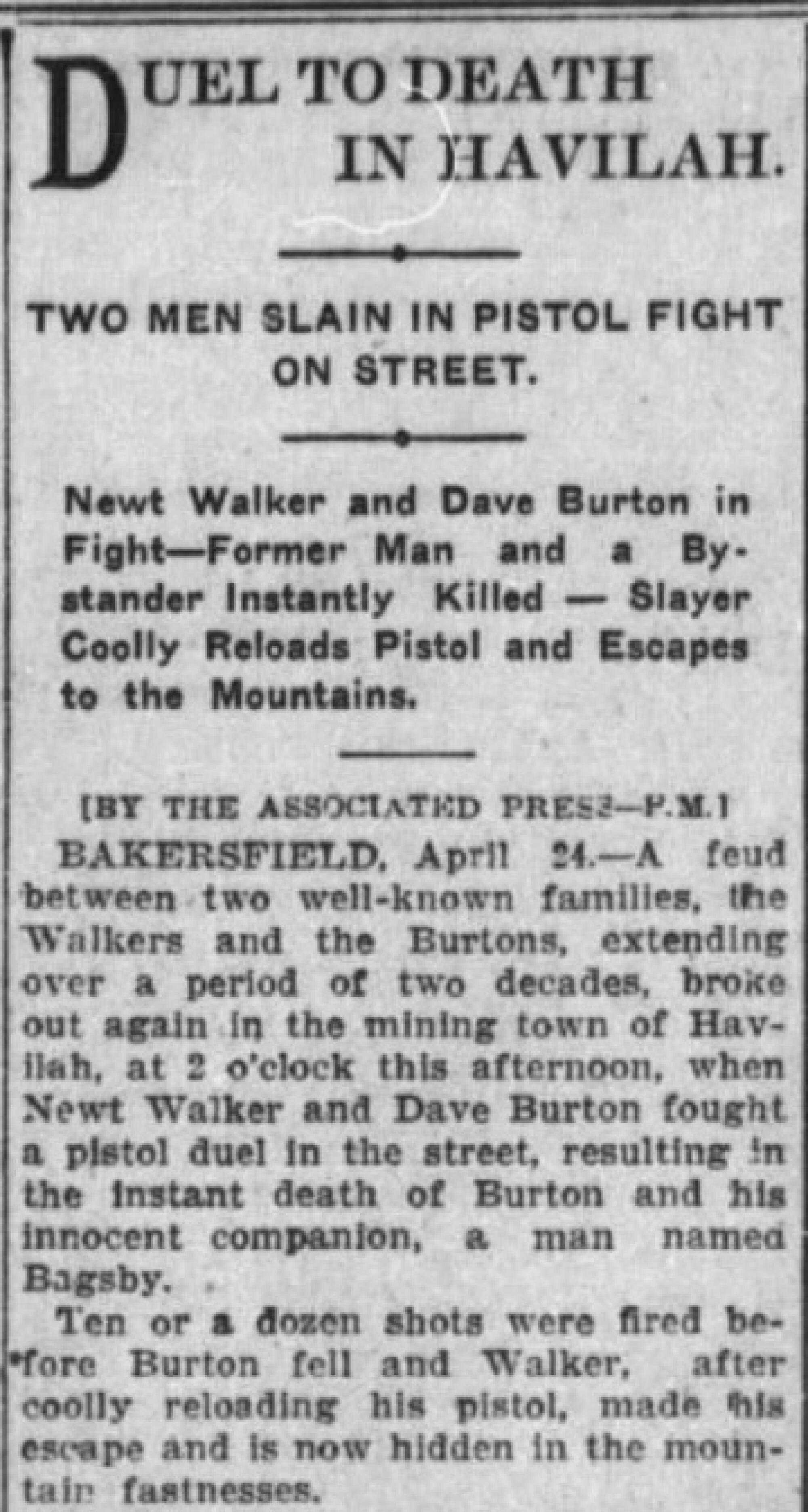
As gold became harder to find, people deserted Havilah, and its buildings fell into disrepair. Those who remained attempted to commemorate the community’s mining legacy and pioneer heritage. In 1966, for the centennial of Havilah’s founding, residents finished building the replica courthouse. They later built a replica of the town’s schoolhouse, which doubled as a community center.
Historical markings along Caliente-Bodfish Road indicate buildings that once existed: barbershop, a blacksmith, the Grand Inn and a livery stable. Some large plaques also pay tribute to historic events such as the last stagecoach robbery in Kern County in 1869, in which a gunman made off with $1,700 in coinage and gold bullion.
Wesley Kutzner, a historical society member and Fluhart’s uncle, helped build the replica courthouse alongside his parents and other locals. Although the historical society couldn’t afford fire insurance, Kutzner said he has resolved to clean up the property and rebuild, the same way the community did nearly 60 years ago.
“The plan is to rebuild,” Kutzner said. “It’s going to be a community effort. It’s going to be a tough road home, but we’ll get it done.”
One resident who plans to rebuild is Sean Rains. He left Bakersfield two years ago and moved to Havilah with his girlfriend and their pit bull, seeking the tranquility of the mountains. Rains, a miner and countertop fabricator, had also been one of the few people holding onto hope of finding buried treasure in Havilah.
In his front yard, Rains kept a shaker table and other equipment to sift soil for flecks of gold.
It was “nothing to make us rich,” he said, but he did find some.
“They say it’s everywhere,” Rains said. “It’s just a matter of whether it’s enough to make it worth your while.”
1
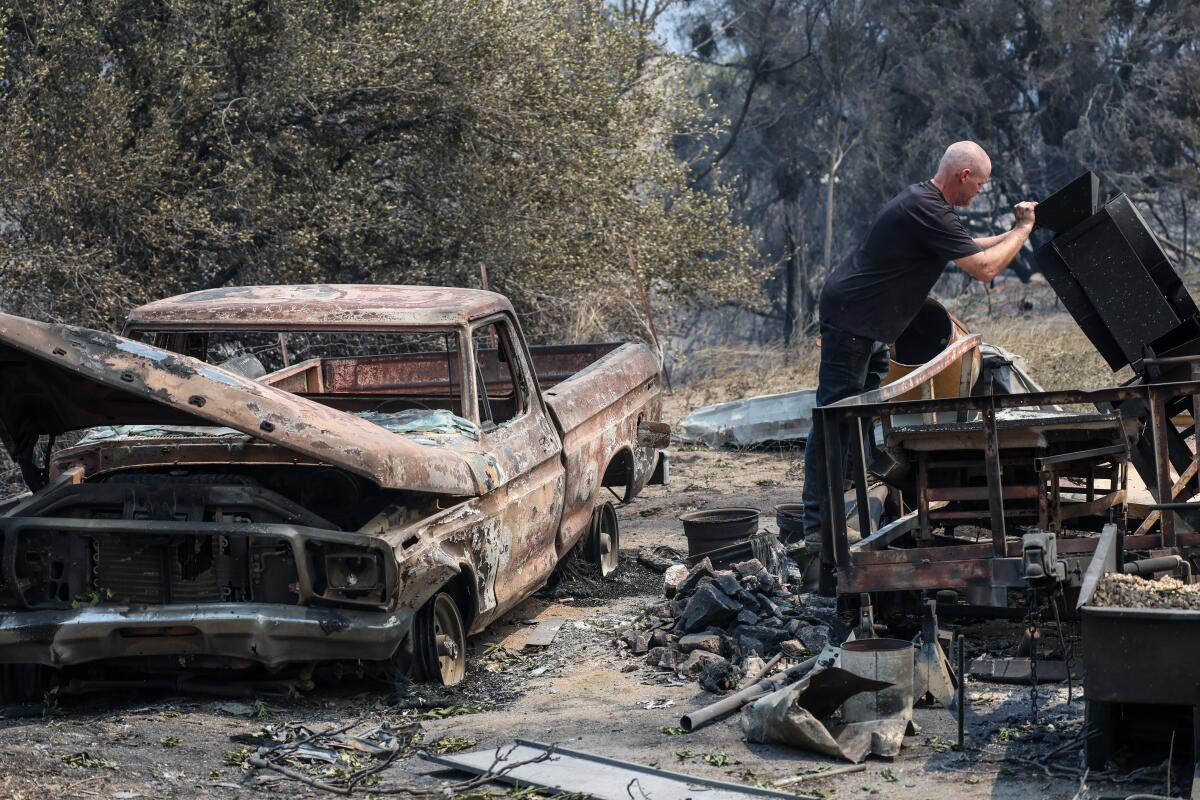
2
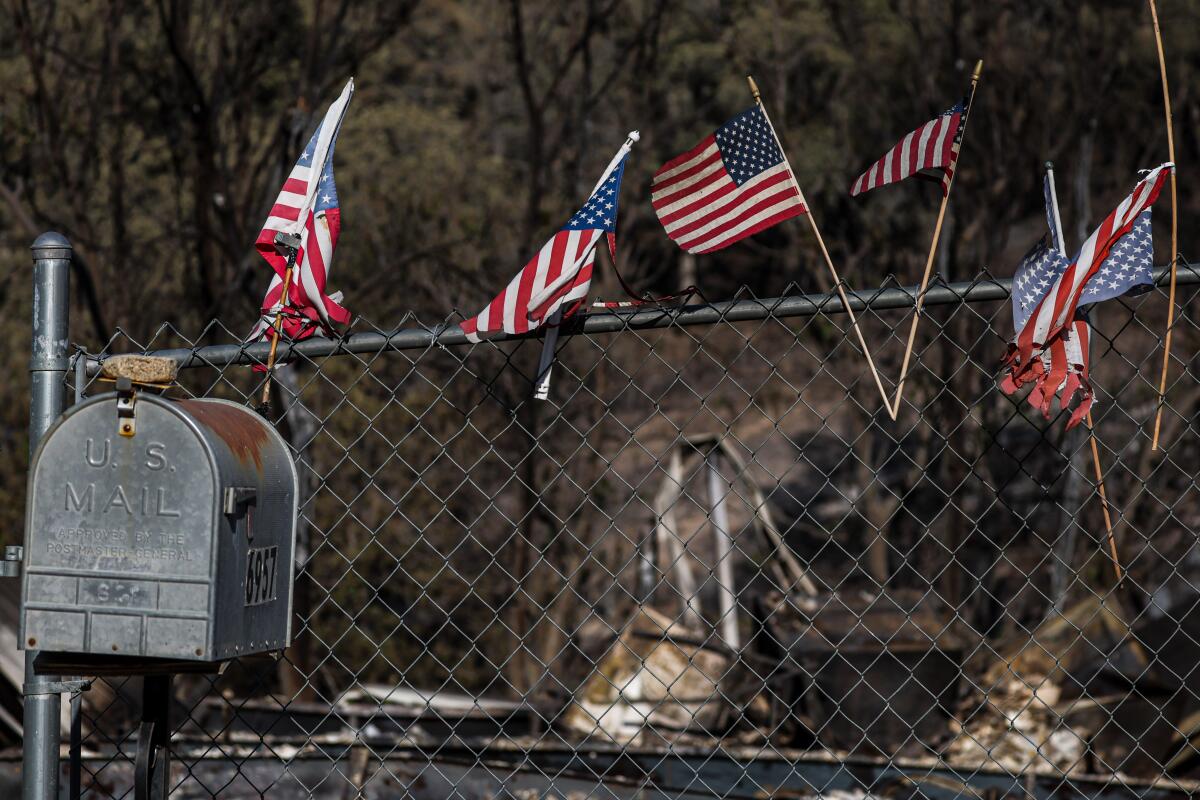
3
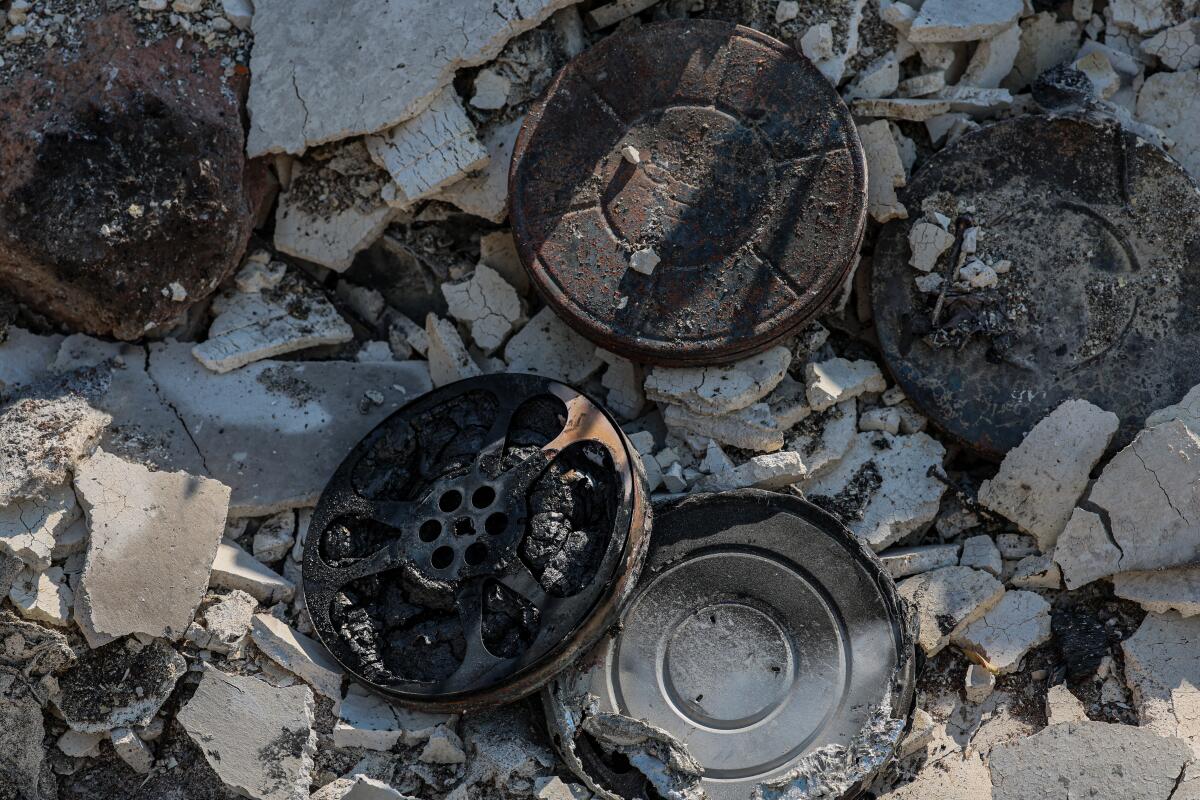
1. Sean Rains moved to Havilah two years ago and had taken up panning for gold with a shaker table in his frontyard. 2. A roadside scene in Havilah. 3. Film canisters lay melted on the floor of the Havilah museum, just some of the artifacts lost in the Borel fire.
Rains was also recruited into the historical society. He read old letters in which a sheriff had remarked that the town’s only pastimes were robbing stagecoaches and horse racing. Another recalled how pioneers hauled their carriages over the mountainous terrain by rope.
The historical society had recently installed a water hose at the replica schoolhouse. Because Rains lived nearby, he was asked to help defend the schoolhouse if there was ever a fire.
“I gave them my word,” he said.
So once Rains saw fire crest the mountaintop behind his home and swiftly descend into the valley, he rushed next door to start up the schoolhouse’s water pump. He sprayed down the building and extinguished embers under its front porch.
He eventually turned his attention to his own one-story house, dousing it until the trees in his yard caught fire. He, his girlfriend and their dog sped away in his pickup truck.
“It was licking our heels on the way out of here,” Rains recalled. “It was right on top of us. The winds were crazy in that thing, going in all different directions. It was sucking branches right off the trees. The whole mountain was engulfed.”
Rains returned to town the next morning, walking along Caliente-Bodfish Road to see what was left of Havilah.
The valley’s pines and oaks were charred, and much of the landscape was covered in white ash. Rains’ two-bedroom home was burned to its cobblestone foundation. Two cars he had been restoring were scorched husks. His two ATVs were reduced to skeletal frames.
The schoolhouse survived.
